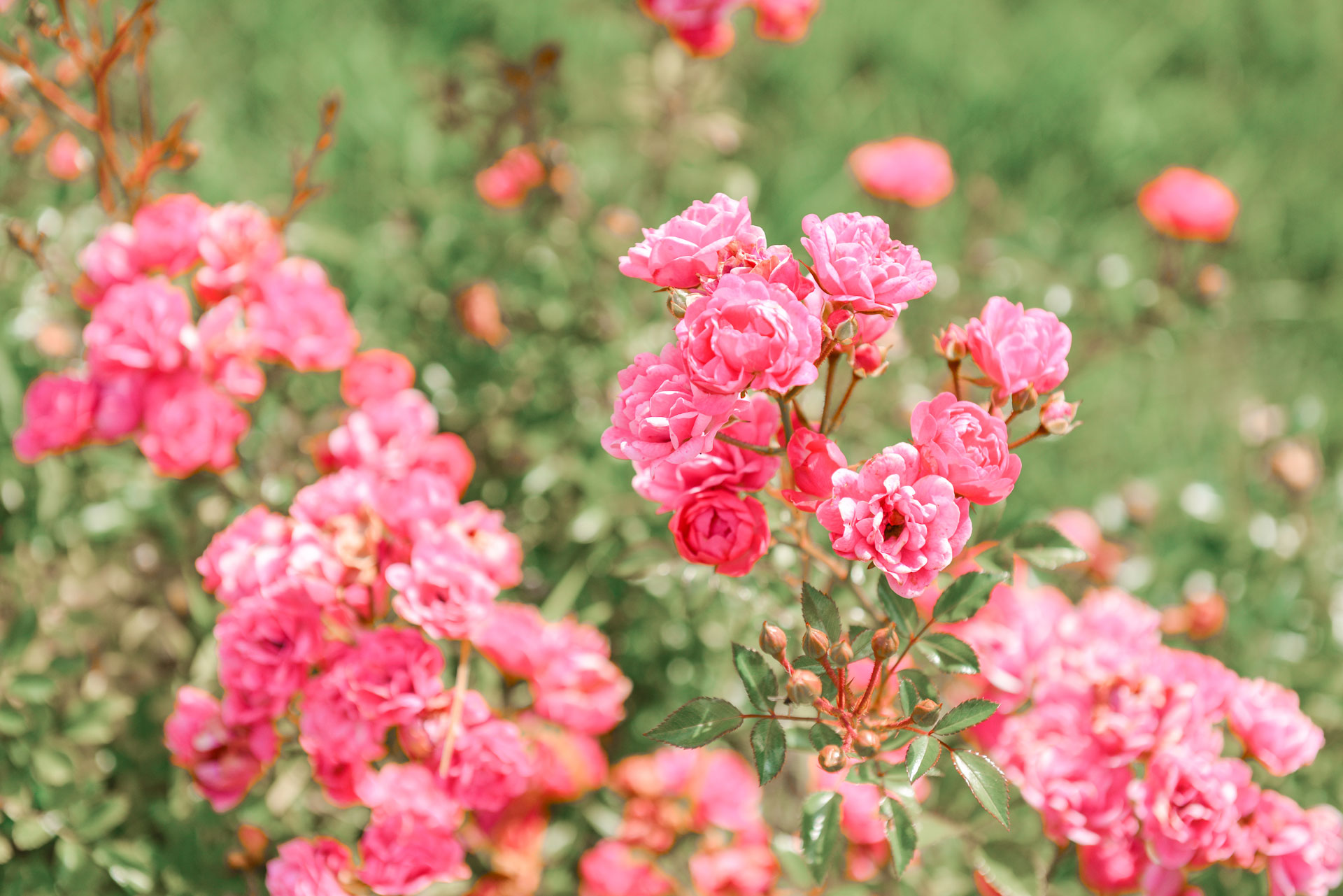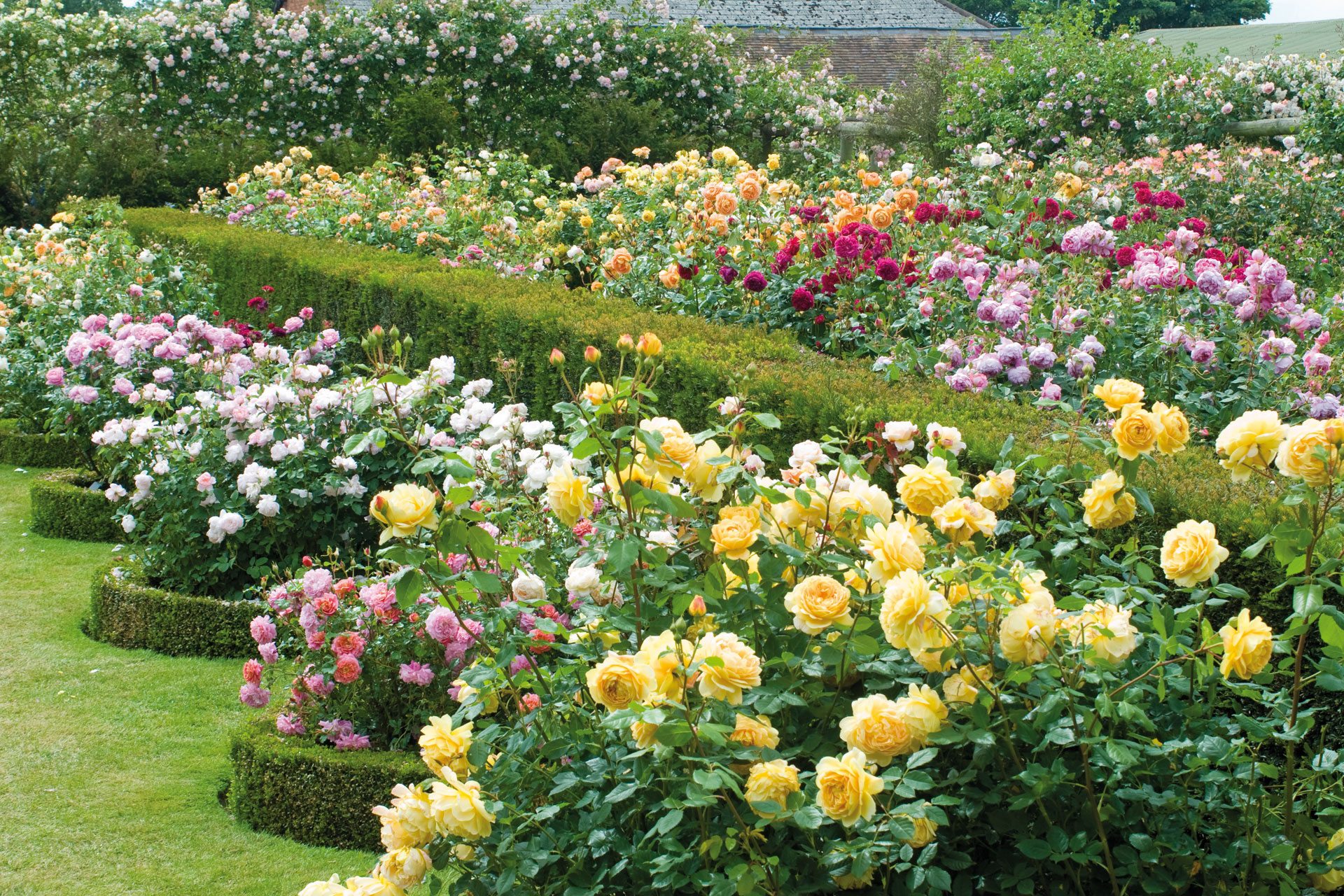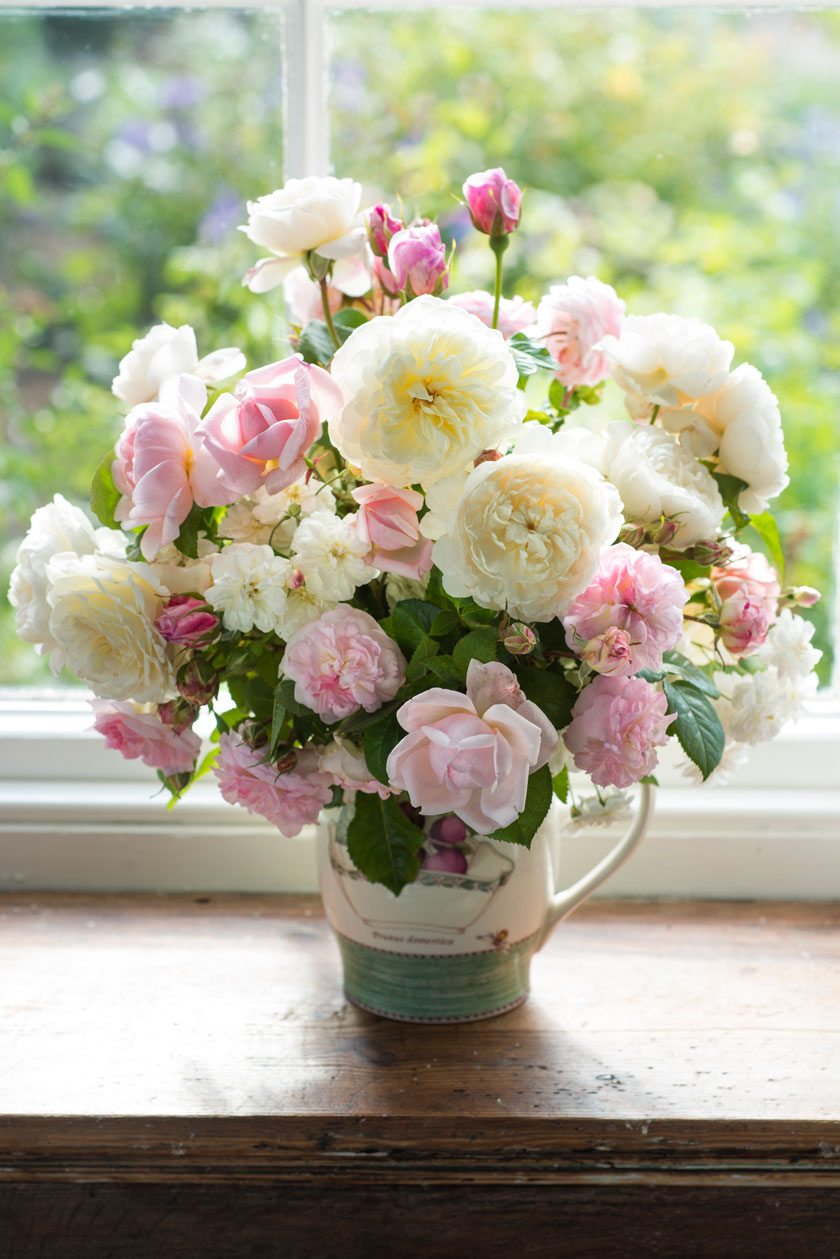English Roses in the House & Garden
By
2 years ago
A guide, by David Austin

Planning an English rose garden in the country? Or want to introduce some roses into the home? There’s nobody better to give you some words of wisdom than David Austin OBE. Taken from the legendary rose breeder’s book The English Roses, here David tells us the difference between house and garden roses, and gives a few words of wisdom on one of England’s favourite flowers.
The English Rose in the House & Garden
The English Rose as a garden plant
The English Roses were bred with their use in the garden clearly in view. Their flowers have both beauty and fragrance and come in a great variety of forms and sizes, from very large to quite small. But not only this. Their natural shrubby growth—as compared with the squat and angular growth of the Hybrid Teas and Floribundas— makes them ideal for the garden.
Their habit may be bushy or elegantly arching. They may vary in height from tall to quite short. Their foliage can be in many forms and colours. The colour of the flowers, while usually in the gentler shades, can vary from white to deep crimson and from pale lemon to rich gold.
With all these variations, there is something among English Roses that will fit into many parts of the garden and with a great variety of other plants. And, of course, like most present-day roses, they flower throughout the summer. They are among the aristocrats of the garden, providing something special around which other plants can be arranged.
The garden rose is very much man’s creation, even if this is with a great deal of help from above! The nearer to the house and the nearer to manmade structures, the more at home the roses seem to be. This is certainly true of the English Roses. They are very much in place in the mixed border and in beds and borders surrounding the house.
With their rather unruly growth—and the weight of their flowers—English Roses seem ideally suited where they are in marked contrast to hard edges. It is, I think, the contrast between the more formal garden, with its neatly cut edges, and the rampant growth of English Roses that is so effective. Each seems to need the other. Whereas English Roses appreciate the discipline that the formal garden offers, we would not usually plant them in wilder areas, unless we chose one of the English Alba hybrids or another variety of more rampant, wild-rose growth.
English roses in the house
English roses are not only good garden plants; they are also among the best flowers for cutting and arrangement in the house. They are less rigid in growth than the Hybrid Teas and this gives them a certain grace when arranged in bowls. Their open flowers come in a whole range of different formations: single, semi-double, rosettes and cups, as well as spray-flowered.
This in turn makes possible a greater variety of arrangements with far less of the sameness that we have with the Hybrid Tea Roses. The fact that the flowers of English Roses are softer in colour and texture than the Hybrid Teas enables them to mix more easily with other flowers as well as with one another. The play of light between the petals provides perhaps even better effects in the house than it does in the garden. If we add to this the many and varied fragrances of English Roses, we have what amounts to a very good cut flower. Indeed, one leading London flower arranger, Shane Connolly, once said to me that if he could obtain English Roses more easily, he would use nothing else.
The English Roses by David Austin, published by Conran Octopus, £30 www.octopusbooks.co.uk is out now.
READ MORE: The Best Gardens to Visit in Britain / Garden Inspiration: See some of the best gardens in the world





